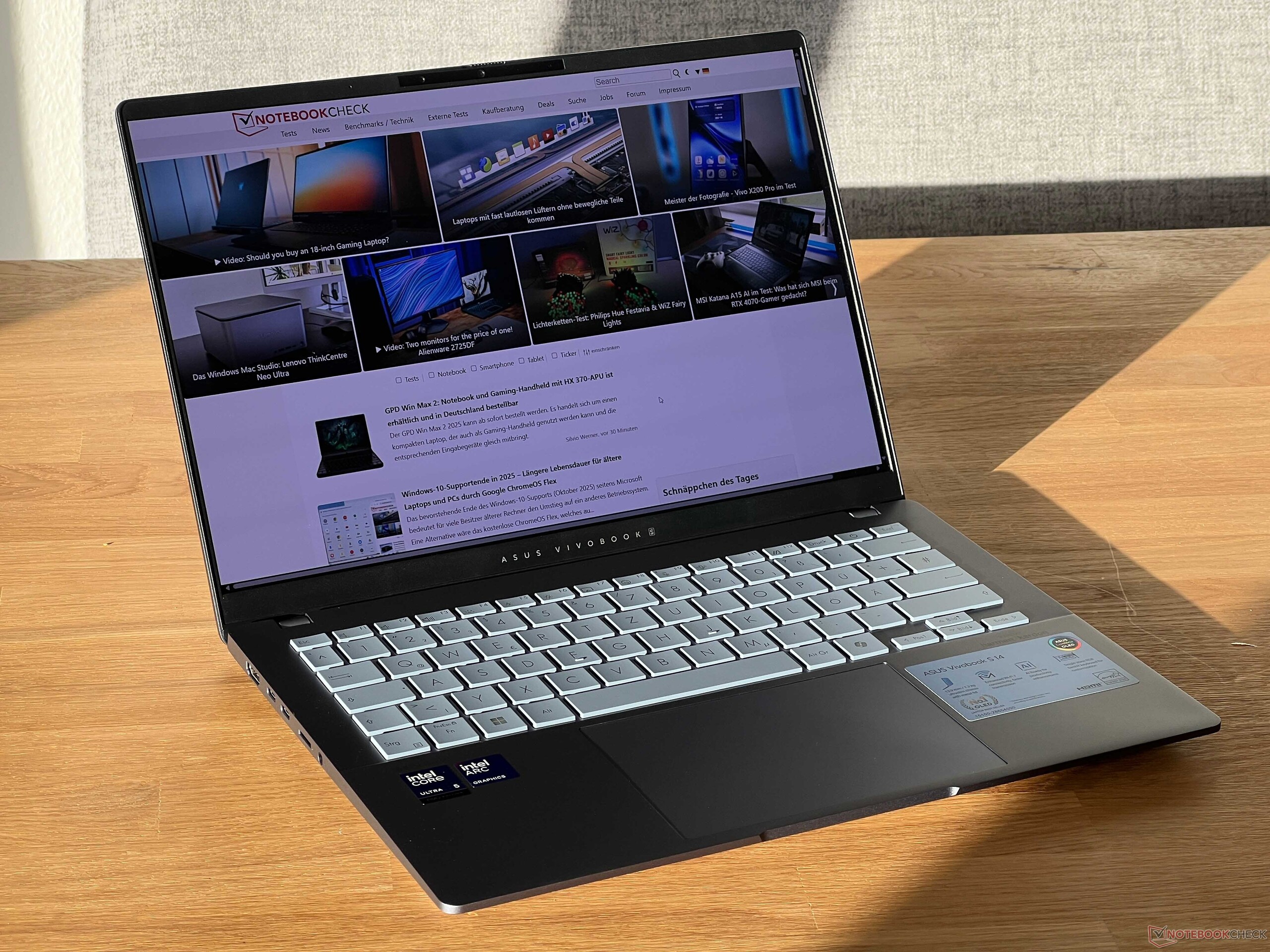
Asus Vivobook S 14 OLED Review: Affordable, quieter, and long lasting thanks to Lunar Lake
Intel Lunar Lake or AMD Zen 5?
In addition to the AMD model, Asus is now also launching the compact Vivobook S 14 OLED with the latest Intel Lunar Lake processor. We focus on the performance and fan behavior of the two models in the review as other components, including the 60 Hz FHD OLED panel, are common in both variants.Andreas Osthoff, 👁 Andreas Osthoff, ✓ Vaidyanathan Subramaniam (translated by DeepL / Ninh Duy) Published 🇩🇪 🇫🇷 ...
Verdict: Vivobook S 14 is a better overall package with Lunar Lake
The compact Asus Vivobook S 14 OLED does benefit with an Intel Lunar Lake option in some areas. Although the multi-core performance drops significantly compared to the AMD variant, the overall performance is still perfectly adequate for most everyday tasks.
The big advantage is lower power limits, which is particularly noticeable due to the much quieter fans that only get loud when the CPU & GPU are under maximum load. Otherwise, the Intel model remains consistently quieter than its AMD counterpart.
Along with the Lunar Lake upgrade, the Vivobook S 14 OLED Intel also brings additional features such as Thunderbolt 4, the extended AI functions from Microsoft (Copilot+) and a modern Wi-Fi 7 module.
There are plenty of ports, the input devices are comfortable, and the battery run times have been improved once again. Clocking 17 hours in the Wi-Fi test at 150 nits and just under 11 hours at full brightness, the compact Vivobook S 14 OLED performs excellently, although this is also a benefit of the low screen resolution.
This brings us to a point of criticism of the Vivobook, because the basic version uses an OLED panel with a resolution of 1,920 x 1,200. The picture is subjectively very good and vivid, and accurate color profiles are also available.
However, the panel is also very reflective (no touchscreen) and the refresh rate is limited to just 60 Hz. PWM flickering is also present, but at least Asus offers a software solution to mitigate the problem.
Another point of criticism is the non-expandable RAM, but this is on Intel as the RAM is integrated directly onto the Lunar Lake package.
With an RRP of €1,099 or $1,000, the new Vivobook S 14 OLED Intel version is convincing, nevertheless. It is not only €300 cheaper than the AMD variant but also offers a better overall package as a portable everyday companion thanks to its lower emissions.
Pros
Cons
Price and availability
The Vivobook S 14 OLED test device with the Core Ultra 5 226V, 16 GB RAM, and 512 GB SSD can be ordered directly from Asus for €1,099. A model with the Core Ultra 7 258V, 32 GB RAM, and 1 TB SSD is currently available from Amazon for $999.99.
Potential competitors in comparison
Image | Model / Review | Price | Weight | Height | Display |
|---|---|---|---|---|---|
| Asus Vivobook S 14 OLED S5406SA Intel Core Ultra 5 226V ⎘ Intel Arc Graphics 130V ⎘ 16 GB Memory, 512 GB SSD | Amazon: 1. $1,065.99 ASUS Vivobook S 14 Copilot+ ... 2. $1,143.19 ASUS Vivobook S 14 OLED Slim... 3. $40.99 90W USB-C Charger Compatible... List Price: 1099€ | 1.3 kg | 15.9 mm | 14.00" 1920x1200 162 PPI OLED | |
| Asus VivoBook S 14 OLED M5406WA AMD Ryzen AI 9 HX 370 ⎘ AMD Radeon 890M ⎘ 24 GB Memory, 1024 GB SSD | Amazon: $1,143.19 List Price: 1400 EUR | 1.3 kg | 15.9 mm | 14.00" 1920x1200 162 PPI OLED | |
| Acer Swift 14 AI SF14-51-58TU Intel Core Ultra 5 226V ⎘ Intel Arc Graphics 130V ⎘ 16 GB Memory, 512 GB SSD | List Price: 1200 EUR | 1.3 kg | 16 mm | 14.00" 2880x1800 243 PPI OLED | |
| Lenovo Yoga Slim 6 14APU8 AMD Ryzen 5 7540U ⎘ AMD Radeon 740M ⎘ 16 GB Memory, 1024 GB SSD | Amazon: List Price: 800 EUR | 1.4 kg | 15 mm | 14.00" 1920x1200 162 PPI OLED | |
| Xiaomi RedmiBook Pro 14 2024 Intel Core Ultra 7 155H ⎘ Intel Arc 8-Core iGPU ⎘ 32 GB Memory, 1024 GB SSD | Amazon: 1. $7.99 Natbok 2+2 Pack 3D Screen Pr... 2. $24.97 Color Black 14-15.6" MacBook... 3. $9.99 Case for Xiaomi Redmi Note 1... List Price: 870€ | 1.4 kg | 15.9 mm | 14.00" 2880x1800 243 PPI IPS | |
| Schenker VIA 14 Pro (M24) AMD Ryzen 7 8845HS ⎘ AMD Radeon 780M ⎘ 32 GB Memory, 2048 GB SSD | Amazon: 1. $15.98 Puccy 2 Pack Film Protector,... 2. $12.98 Puccy 2 Pack Touch Pad Film ... 3. $18.98 Puccy 2 Pack Back Protector ... List Price: 1275€ | 1.4 kg | 18.5 mm | 14.00" 2880x1800 243 PPI IPS | |
| Huawei MateBook 14 FLMH-W7611T Intel Core Ultra 7 155H ⎘ Intel Arc 8-Core iGPU ⎘ 16 GB Memory, 1024 GB SSD | Amazon: 1. $48.00 Laptop PalmRest for Huawei M... 2. $48.00 Laptop PalmRest for Huawei M... 3. $48.00 Laptop Bottom Case for Huawe... List Price: 1399€ | 1.3 kg | 17.08 mm | 14.20" 2880x1920 244 PPI OLED |
We already tested the Vivobook S 14 OLED featuring the AMD Ryzen AI 9 HX 370 extensively a few months ago. Now Asus is launching another model with a Lunar Lake processor from Intel.
Our configuration is the base model for an RRP of €1,099, which gets you the Core Ultra 5 226V, 16 GB RAM, a 512 GB SSD and a 60 Hz FHD OLED panel. The configuration with the Core Ultra 7 258V, 32 GB RAM, a 1 TB SSD and a 120 Hz 3K OLED panel will set you back by an RRP of €1,499. The availability of both variants is currently limited.
Specifications
Differences with the AMD variant
The Lunar Lake Vivobook S 14 OLED's chassis does not differ from the already tested AMD model. The Intel version is available in either Black or Mist Blue colors, depending on the processor option.
The quality of the chassis is perfectly acceptable, and the keyboard offers a very comfortable travel of 1.7 mm. As with the AMD model, the RAM cannot be upgraded as it is part of the Intel chip. However, the M.2 2280 SSD can be easily replaced.
The two USB-C ports on the Intel Vivobook support Thunderbolt 4 and the Wi-Fi module (Intel BE201) also supports Wi-Fi 7. As a Copilot+ PC, the Vivobook now supports advanced AI functions such as live subtitles and Windows Studio Effects for the 1080p webcam, although the webcam quality itself remains average.
By now, the AMD version should also have received the necessary software updates for Copilot+ functionality.
| SD Card Reader | |
| average JPG Copy Test (av. of 3 runs) | |
| Average of class Subnotebook (18.4 - 142, n=13, last 2 years) | |
| Asus VivoBook S 14 OLED M5406WA (AV PRO microSD 128 GB V60) | |
| Asus Vivobook S 14 OLED S5406SA | |
| Schenker VIA 14 Pro (M24) (Angelbird AV Pro V60) | |
| maximum AS SSD Seq Read Test (1GB) | |
| Average of class Subnotebook (22.5 - 207, n=13, last 2 years) | |
| Asus VivoBook S 14 OLED M5406WA (AV PRO microSD 128 GB V60) | |
| Asus Vivobook S 14 OLED S5406SA | |
| Schenker VIA 14 Pro (M24) (Angelbird AV Pro V60) | |
| Networking | |
| Asus Vivobook S 14 OLED S5406SA | |
| iperf3 transmit AXE11000 | |
| iperf3 receive AXE11000 | |
| Asus VivoBook S 14 OLED M5406WA | |
| iperf3 transmit AXE11000 | |
| iperf3 receive AXE11000 | |
| Acer Swift 14 AI SF14-51-58TU | |
| iperf3 transmit AXE11000 | |
| iperf3 receive AXE11000 | |
| Lenovo Yoga Slim 6 14APU8 | |
| iperf3 transmit AXE11000 | |
| iperf3 receive AXE11000 | |
| Xiaomi RedmiBook Pro 14 2024 | |
| iperf3 transmit AXE11000 | |
| iperf3 receive AXE11000 | |
| Schenker VIA 14 Pro (M24) | |
| iperf3 transmit AXE11000 | |
| iperf3 receive AXE11000 | |
| Huawei MateBook 14 FLMH-W7611T | |
| iperf3 transmit AXE11000 | |
| iperf3 receive AXE11000 | |

Sustainability
The packaging consists mainly of cardboard and recyclable materials. The manufacturer does not provide any further details on the use of recycled materials in the device itself or the CO2 footprint during production.
Display: Full HD OLED with 60 Hz
Asus also relies on the well-known Samsung OLED panel (ATNA40CT02-0) for the Intel-based Vivobook S 14, which offers a resolution of 1,920 x 1,200 pixels in a 16:10 aspect ratio.
Detailed information about the display can be found in our review of the AMD variant, which is why we will concentrate only on the most important information here.
The OLED screen offers a sufficiently sharp image with vivid colors and high contrast. The response times are fast, but the OLED's refresh rate is limited to 60 Hz, which is noticeable in everyday use.
The second major problem is the highly reflective surface, even though there is no touchscreen. The SDR brightness is just under 400 cd/m² and in HDR mode it peaks at a maximum of 600 cd/m².
Asus offers various color profiles, including very accurate profiles for Display P3 and sRGB color spaces, which are fully covered.
There is PWM flickering at 240 Hz, but Asus offers a software solution called flicker-free dimming, which allows you to avoid the classic PWM flickering and stay within the DC dimming range.
Performance: Intel Lunar Lake with LPDDR5x-8533-RAM
Test conditions
Asus offers various fan profiles that can also be synchronized with Windows energy profiles. For the following benchmarks and measurements, we used the Performance mode that is coupled with the Windows Best Performance profile.
Processor
Our test device is equipped with the Intel Core Ultra 5 226V processor belonging to the Lunar Lake generation. This offers four fast performance cores and four efficiency cores. The number of cores is therefore significantly lower than with the old Meteor Lake CPUs and as the focus here is more on efficiency, the maximum TDP is also significantly lower.
Under multi-core load, the processor initially consumes between 36-39 W and then settles at a stable 35 W after around 40 seconds. The performance is therefore also very stable overall. However, multi-core performance is not particularly good, as competitors with AMD chips and the old Meteor Lake CPUs are significantly faster.
The Core Ultra 5 226V performs better in the single-core tests and the cumulative CPU performance is perfectly adequate for many everyday applications. However, an AMD Zen 5 processor with comparably low power limits would still be faster in the multi-core tests.
The performance remains consistent in battery mode. Further CPU benchmarks are available here.
Cinebench R15 Multi-core loop
Cinebench R23: Multi Core | Single Core
Cinebench R20: CPU (Multi Core) | CPU (Single Core)
Cinebench R15: CPU Multi 64Bit | CPU Single 64Bit
Blender: v2.79 BMW27 CPU
7-Zip 18.03: 7z b 4 | 7z b 4 -mmt1
Geekbench 6.5: Multi-Core | Single-Core
Geekbench 5.5: Multi-Core | Single-Core
HWBOT x265 Benchmark v2.2: 4k Preset
LibreOffice : 20 Documents To PDF
R Benchmark 2.5: Overall mean
| CPU Performance rating | |
| Asus VivoBook S 14 OLED M5406WA | |
| Schenker VIA 14 Pro (M24) | |
| Xiaomi RedmiBook Pro 14 2024 | |
| Huawei MateBook 14 FLMH-W7611T | |
| Average of class Subnotebook | |
| Average Intel Core Ultra 5 226V | |
| Asus Vivobook S 14 OLED S5406SA | |
| Acer Swift 14 AI SF14-51-58TU | |
| Lenovo Yoga Slim 6 14APU8 | |
| Cinebench R23 / Multi Core | |
| Asus VivoBook S 14 OLED M5406WA | |
| Xiaomi RedmiBook Pro 14 2024 | |
| Schenker VIA 14 Pro (M24) | |
| Huawei MateBook 14 FLMH-W7611T | |
| Average of class Subnotebook (1555 - 21812, n=74, last 2 years) | |
| Lenovo Yoga Slim 6 14APU8 | |
| Asus Vivobook S 14 OLED S5406SA | |
| Average Intel Core Ultra 5 226V (9827 - 9940, n=6) | |
| Acer Swift 14 AI SF14-51-58TU | |
| Cinebench R23 / Single Core | |
| Asus VivoBook S 14 OLED M5406WA | |
| Schenker VIA 14 Pro (M24) | |
| Xiaomi RedmiBook Pro 14 2024 | |
| Huawei MateBook 14 FLMH-W7611T | |
| Average Intel Core Ultra 5 226V (1699 - 1821, n=6) | |
| Asus Vivobook S 14 OLED S5406SA | |
| Average of class Subnotebook (358 - 2165, n=75, last 2 years) | |
| Lenovo Yoga Slim 6 14APU8 | |
| Acer Swift 14 AI SF14-51-58TU | |
| Cinebench R20 / CPU (Multi Core) | |
| Asus VivoBook S 14 OLED M5406WA | |
| Xiaomi RedmiBook Pro 14 2024 | |
| Schenker VIA 14 Pro (M24) | |
| Huawei MateBook 14 FLMH-W7611T | |
| Average of class Subnotebook (579 - 8541, n=69, last 2 years) | |
| Lenovo Yoga Slim 6 14APU8 | |
| Asus Vivobook S 14 OLED S5406SA | |
| Average Intel Core Ultra 5 226V (3826 - 3889, n=6) | |
| Acer Swift 14 AI SF14-51-58TU | |
| Cinebench R20 / CPU (Single Core) | |
| Asus VivoBook S 14 OLED M5406WA | |
| Schenker VIA 14 Pro (M24) | |
| Xiaomi RedmiBook Pro 14 2024 | |
| Huawei MateBook 14 FLMH-W7611T | |
| Average Intel Core Ultra 5 226V (653 - 703, n=6) | |
| Asus Vivobook S 14 OLED S5406SA | |
| Lenovo Yoga Slim 6 14APU8 | |
| Acer Swift 14 AI SF14-51-58TU | |
| Average of class Subnotebook (128 - 826, n=69, last 2 years) | |
| Cinebench R15 / CPU Multi 64Bit | |
| Asus VivoBook S 14 OLED M5406WA | |
| Xiaomi RedmiBook Pro 14 2024 | |
| Huawei MateBook 14 FLMH-W7611T | |
| Schenker VIA 14 Pro (M24) | |
| Average of class Subnotebook (327 - 3345, n=69, last 2 years) | |
| Lenovo Yoga Slim 6 14APU8 | |
| Asus Vivobook S 14 OLED S5406SA | |
| Acer Swift 14 AI SF14-51-58TU | |
| Average Intel Core Ultra 5 226V (1483 - 1531, n=6) | |
| Cinebench R15 / CPU Single 64Bit | |
| Asus VivoBook S 14 OLED M5406WA | |
| Schenker VIA 14 Pro (M24) | |
| Average Intel Core Ultra 5 226V (261 - 278, n=6) | |
| Lenovo Yoga Slim 6 14APU8 | |
| Acer Swift 14 AI SF14-51-58TU | |
| Asus Vivobook S 14 OLED S5406SA | |
| Average of class Subnotebook (72.4 - 322, n=69, last 2 years) | |
| Xiaomi RedmiBook Pro 14 2024 | |
| Huawei MateBook 14 FLMH-W7611T | |
| Blender / v2.79 BMW27 CPU | |
| Lenovo Yoga Slim 6 14APU8 | |
| Average of class Subnotebook (159 - 2271, n=72, last 2 years) | |
| Acer Swift 14 AI SF14-51-58TU | |
| Average Intel Core Ultra 5 226V (346 - 357, n=6) | |
| Asus Vivobook S 14 OLED S5406SA | |
| Huawei MateBook 14 FLMH-W7611T | |
| Schenker VIA 14 Pro (M24) | |
| Xiaomi RedmiBook Pro 14 2024 | |
| Asus VivoBook S 14 OLED M5406WA | |
| 7-Zip 18.03 / 7z b 4 | |
| Asus VivoBook S 14 OLED M5406WA | |
| Schenker VIA 14 Pro (M24) | |
| Xiaomi RedmiBook Pro 14 2024 | |
| Huawei MateBook 14 FLMH-W7611T | |
| Average of class Subnotebook (11668 - 77867, n=69, last 2 years) | |
| Lenovo Yoga Slim 6 14APU8 | |
| Asus Vivobook S 14 OLED S5406SA | |
| Average Intel Core Ultra 5 226V (32929 - 33446, n=5) | |
| Acer Swift 14 AI SF14-51-58TU | |
| 7-Zip 18.03 / 7z b 4 -mmt1 | |
| Schenker VIA 14 Pro (M24) | |
| Asus VivoBook S 14 OLED M5406WA | |
| Lenovo Yoga Slim 6 14APU8 | |
| Average of class Subnotebook (2643 - 6442, n=71, last 2 years) | |
| Xiaomi RedmiBook Pro 14 2024 | |
| Acer Swift 14 AI SF14-51-58TU | |
| Average Intel Core Ultra 5 226V (5240 - 5341, n=5) | |
| Asus Vivobook S 14 OLED S5406SA | |
| Huawei MateBook 14 FLMH-W7611T | |
| Geekbench 6.5 / Multi-Core | |
| Asus VivoBook S 14 OLED M5406WA | |
| Xiaomi RedmiBook Pro 14 2024 | |
| Schenker VIA 14 Pro (M24) | |
| Schenker VIA 14 Pro (M24) | |
| Huawei MateBook 14 FLMH-W7611T | |
| Average of class Subnotebook (2244 - 17489, n=80, last 2 years) | |
| Asus Vivobook S 14 OLED S5406SA | |
| Average Intel Core Ultra 5 226V (9850 - 10151, n=6) | |
| Acer Swift 14 AI SF14-51-58TU | |
| Lenovo Yoga Slim 6 14APU8 | |
| Geekbench 6.5 / Single-Core | |
| Asus VivoBook S 14 OLED M5406WA | |
| Average of class Subnotebook (960 - 3820, n=74, last 2 years) | |
| Schenker VIA 14 Pro (M24) | |
| Schenker VIA 14 Pro (M24) | |
| Average Intel Core Ultra 5 226V (2527 - 2697, n=7) | |
| Asus Vivobook S 14 OLED S5406SA | |
| Acer Swift 14 AI SF14-51-58TU | |
| Lenovo Yoga Slim 6 14APU8 | |
| Huawei MateBook 14 FLMH-W7611T | |
| Xiaomi RedmiBook Pro 14 2024 | |
| Geekbench 5.5 / Multi-Core | |
| Asus VivoBook S 14 OLED M5406WA | |
| Xiaomi RedmiBook Pro 14 2024 | |
| Huawei MateBook 14 FLMH-W7611T | |
| Schenker VIA 14 Pro (M24) | |
| Average of class Subnotebook (2557 - 17218, n=64, last 2 years) | |
| Asus Vivobook S 14 OLED S5406SA | |
| Average Intel Core Ultra 5 226V (8704 - 8995, n=6) | |
| Acer Swift 14 AI SF14-51-58TU | |
| Lenovo Yoga Slim 6 14APU8 | |
| Geekbench 5.5 / Single-Core | |
| Asus VivoBook S 14 OLED M5406WA | |
| Schenker VIA 14 Pro (M24) | |
| Asus Vivobook S 14 OLED S5406SA | |
| Average of class Subnotebook (726 - 2350, n=64, last 2 years) | |
| Average Intel Core Ultra 5 226V (1852 - 1912, n=6) | |
| Lenovo Yoga Slim 6 14APU8 | |
| Acer Swift 14 AI SF14-51-58TU | |
| Huawei MateBook 14 FLMH-W7611T | |
| Xiaomi RedmiBook Pro 14 2024 | |
| HWBOT x265 Benchmark v2.2 / 4k Preset | |
| Asus VivoBook S 14 OLED M5406WA | |
| Schenker VIA 14 Pro (M24) | |
| Xiaomi RedmiBook Pro 14 2024 | |
| Huawei MateBook 14 FLMH-W7611T | |
| Average of class Subnotebook (0.97 - 25.1, n=69, last 2 years) | |
| Asus Vivobook S 14 OLED S5406SA | |
| Average Intel Core Ultra 5 226V (12.2 - 12.8, n=6) | |
| Acer Swift 14 AI SF14-51-58TU | |
| Lenovo Yoga Slim 6 14APU8 | |
| LibreOffice / 20 Documents To PDF | |
| Xiaomi RedmiBook Pro 14 2024 | |
| Lenovo Yoga Slim 6 14APU8 | |
| Acer Swift 14 AI SF14-51-58TU | |
| Asus Vivobook S 14 OLED S5406SA | |
| Average of class Subnotebook (38.5 - 220, n=68, last 2 years) | |
| Average Intel Core Ultra 5 226V (45.2 - 68.5, n=6) | |
| Asus VivoBook S 14 OLED M5406WA | |
| Schenker VIA 14 Pro (M24) | |
| Huawei MateBook 14 FLMH-W7611T | |
| R Benchmark 2.5 / Overall mean | |
| Average of class Subnotebook (0.403 - 1.456, n=70, last 2 years) | |
| Acer Swift 14 AI SF14-51-58TU | |
| Asus Vivobook S 14 OLED S5406SA | |
| Average Intel Core Ultra 5 226V (0.4719 - 0.4896, n=6) | |
| Xiaomi RedmiBook Pro 14 2024 | |
| Huawei MateBook 14 FLMH-W7611T | |
| Schenker VIA 14 Pro (M24) | |
| Lenovo Yoga Slim 6 14APU8 | |
| Asus VivoBook S 14 OLED M5406WA | |
* ... smaller is better
AIDA64: FP32 Ray-Trace | FPU Julia | CPU SHA3 | CPU Queen | FPU SinJulia | FPU Mandel | CPU AES | CPU ZLib | FP64 Ray-Trace | CPU PhotoWorxx
| Performance rating | |
| Asus VivoBook S 14 OLED M5406WA | |
| Schenker VIA 14 Pro (M24) | |
| Xiaomi RedmiBook Pro 14 2024 | |
| Huawei MateBook 14 FLMH-W7611T | |
| Average of class Subnotebook | |
| Lenovo Yoga Slim 6 14APU8 | |
| Asus Vivobook S 14 OLED S5406SA | |
| Acer Swift 14 AI SF14-51-58TU | |
| Average Intel Core Ultra 5 226V | |
| AIDA64 / FP32 Ray-Trace | |
| Asus VivoBook S 14 OLED M5406WA | |
| Schenker VIA 14 Pro (M24) | |
| Lenovo Yoga Slim 6 14APU8 | |
| Xiaomi RedmiBook Pro 14 2024 | |
| Average of class Subnotebook (1135 - 32888, n=68, last 2 years) | |
| Huawei MateBook 14 FLMH-W7611T | |
| Asus Vivobook S 14 OLED S5406SA | |
| Average Intel Core Ultra 5 226V (11849 - 12299, n=6) | |
| Acer Swift 14 AI SF14-51-58TU | |
| AIDA64 / FPU Julia | |
| Asus VivoBook S 14 OLED M5406WA | |
| Schenker VIA 14 Pro (M24) | |
| Xiaomi RedmiBook Pro 14 2024 | |
| Huawei MateBook 14 FLMH-W7611T | |
| Lenovo Yoga Slim 6 14APU8 | |
| Average of class Subnotebook (5218 - 123315, n=68, last 2 years) | |
| Acer Swift 14 AI SF14-51-58TU | |
| Asus Vivobook S 14 OLED S5406SA | |
| Average Intel Core Ultra 5 226V (56296 - 60191, n=6) | |
| AIDA64 / CPU SHA3 | |
| Asus VivoBook S 14 OLED M5406WA | |
| Schenker VIA 14 Pro (M24) | |
| Xiaomi RedmiBook Pro 14 2024 | |
| Huawei MateBook 14 FLMH-W7611T | |
| Average of class Subnotebook (444 - 5287, n=68, last 2 years) | |
| Lenovo Yoga Slim 6 14APU8 | |
| Acer Swift 14 AI SF14-51-58TU | |
| Average Intel Core Ultra 5 226V (2551 - 2570, n=6) | |
| Asus Vivobook S 14 OLED S5406SA | |
| AIDA64 / CPU Queen | |
| Schenker VIA 14 Pro (M24) | |
| Xiaomi RedmiBook Pro 14 2024 | |
| Asus VivoBook S 14 OLED M5406WA | |
| Huawei MateBook 14 FLMH-W7611T | |
| Lenovo Yoga Slim 6 14APU8 | |
| Average of class Subnotebook (10579 - 115682, n=68, last 2 years) | |
| Acer Swift 14 AI SF14-51-58TU | |
| Average Intel Core Ultra 5 226V (46991 - 47087, n=6) | |
| Asus Vivobook S 14 OLED S5406SA | |
| AIDA64 / FPU SinJulia | |
| Asus VivoBook S 14 OLED M5406WA | |
| Schenker VIA 14 Pro (M24) | |
| Xiaomi RedmiBook Pro 14 2024 | |
| Huawei MateBook 14 FLMH-W7611T | |
| Lenovo Yoga Slim 6 14APU8 | |
| Average of class Subnotebook (744 - 18418, n=68, last 2 years) | |
| Asus Vivobook S 14 OLED S5406SA | |
| Average Intel Core Ultra 5 226V (3909 - 3918, n=6) | |
| Acer Swift 14 AI SF14-51-58TU | |
| AIDA64 / FPU Mandel | |
| Asus VivoBook S 14 OLED M5406WA | |
| Schenker VIA 14 Pro (M24) | |
| Xiaomi RedmiBook Pro 14 2024 | |
| Huawei MateBook 14 FLMH-W7611T | |
| Lenovo Yoga Slim 6 14APU8 | |
| Average of class Subnotebook (3341 - 65433, n=68, last 2 years) | |
| Asus Vivobook S 14 OLED S5406SA | |
| Acer Swift 14 AI SF14-51-58TU | |
| Average Intel Core Ultra 5 226V (28485 - 32488, n=6) | |
| AIDA64 / CPU AES | |
| Huawei MateBook 14 FLMH-W7611T | |
| Schenker VIA 14 Pro (M24) | |
| Asus VivoBook S 14 OLED M5406WA | |
| Xiaomi RedmiBook Pro 14 2024 | |
| Average of class Subnotebook (638 - 161430, n=68, last 2 years) | |
| Lenovo Yoga Slim 6 14APU8 | |
| Acer Swift 14 AI SF14-51-58TU | |
| Average Intel Core Ultra 5 226V (34159 - 36373, n=6) | |
| Asus Vivobook S 14 OLED S5406SA | |
| AIDA64 / CPU ZLib | |
| Asus VivoBook S 14 OLED M5406WA | |
| Huawei MateBook 14 FLMH-W7611T | |
| Schenker VIA 14 Pro (M24) | |
| Xiaomi RedmiBook Pro 14 2024 | |
| Average of class Subnotebook (164.9 - 1379, n=68, last 2 years) | |
| Lenovo Yoga Slim 6 14APU8 | |
| Asus Vivobook S 14 OLED S5406SA | |
| Average Intel Core Ultra 5 226V (539 - 572, n=6) | |
| Acer Swift 14 AI SF14-51-58TU | |
| AIDA64 / FP64 Ray-Trace | |
| Asus VivoBook S 14 OLED M5406WA | |
| Schenker VIA 14 Pro (M24) | |
| Xiaomi RedmiBook Pro 14 2024 | |
| Lenovo Yoga Slim 6 14APU8 | |
| Average of class Subnotebook (610 - 17495, n=68, last 2 years) | |
| Huawei MateBook 14 FLMH-W7611T | |
| Asus Vivobook S 14 OLED S5406SA | |
| Acer Swift 14 AI SF14-51-58TU | |
| Average Intel Core Ultra 5 226V (6098 - 6773, n=6) | |
| AIDA64 / CPU PhotoWorxx | |
| Xiaomi RedmiBook Pro 14 2024 | |
| Acer Swift 14 AI SF14-51-58TU | |
| Average Intel Core Ultra 5 226V (50038 - 50372, n=6) | |
| Asus Vivobook S 14 OLED S5406SA | |
| Asus VivoBook S 14 OLED M5406WA | |
| Average of class Subnotebook (6569 - 64588, n=68, last 2 years) | |
| Huawei MateBook 14 FLMH-W7611T | |
| Schenker VIA 14 Pro (M24) | |
| Lenovo Yoga Slim 6 14APU8 | |
System performance
In everyday use, the Vivobook S 14 OLED is a very responsive computer and there were no problems with system stability during our test. The benchmark results are often in the lower mid-range; the Intel Vivobook performs better in the browser tests, however.
CrossMark: Overall | Productivity | Creativity | Responsiveness
WebXPRT 3: Overall
WebXPRT 4: Overall
Mozilla Kraken 1.1: Total
| PCMark 10 / Score | |
| Asus VivoBook S 14 OLED M5406WA | |
| Schenker VIA 14 Pro (M24) | |
| Xiaomi RedmiBook Pro 14 2024 | |
| Huawei MateBook 14 FLMH-W7611T | |
| Average of class Subnotebook (4920 - 8424, n=56, last 2 years) | |
| Average Intel Core Ultra 5 226V, Intel Arc Graphics 130V (6445 - 6734, n=6) | |
| Asus Vivobook S 14 OLED S5406SA | |
| Acer Swift 14 AI SF14-51-58TU | |
| Lenovo Yoga Slim 6 14APU8 | |
| PCMark 10 / Essentials | |
| Xiaomi RedmiBook Pro 14 2024 | |
| Huawei MateBook 14 FLMH-W7611T | |
| Schenker VIA 14 Pro (M24) | |
| Asus VivoBook S 14 OLED M5406WA | |
| Average of class Subnotebook (8552 - 11406, n=56, last 2 years) | |
| Average Intel Core Ultra 5 226V, Intel Arc Graphics 130V (9350 - 10067, n=6) | |
| Lenovo Yoga Slim 6 14APU8 | |
| Acer Swift 14 AI SF14-51-58TU | |
| Asus Vivobook S 14 OLED S5406SA | |
| PCMark 10 / Productivity | |
| Asus VivoBook S 14 OLED M5406WA | |
| Schenker VIA 14 Pro (M24) | |
| Lenovo Yoga Slim 6 14APU8 | |
| Average of class Subnotebook (5435 - 16132, n=56, last 2 years) | |
| Xiaomi RedmiBook Pro 14 2024 | |
| Huawei MateBook 14 FLMH-W7611T | |
| Average Intel Core Ultra 5 226V, Intel Arc Graphics 130V (8457 - 8977, n=6) | |
| Asus Vivobook S 14 OLED S5406SA | |
| Acer Swift 14 AI SF14-51-58TU | |
| PCMark 10 / Digital Content Creation | |
| Asus VivoBook S 14 OLED M5406WA | |
| Huawei MateBook 14 FLMH-W7611T | |
| Xiaomi RedmiBook Pro 14 2024 | |
| Schenker VIA 14 Pro (M24) | |
| Average of class Subnotebook (5722 - 12442, n=56, last 2 years) | |
| Asus Vivobook S 14 OLED S5406SA | |
| Average Intel Core Ultra 5 226V, Intel Arc Graphics 130V (8983 - 9276, n=6) | |
| Acer Swift 14 AI SF14-51-58TU | |
| Lenovo Yoga Slim 6 14APU8 | |
| CrossMark / Overall | |
| Huawei MateBook 14 FLMH-W7611T | |
| Schenker VIA 14 Pro (M24) | |
| Xiaomi RedmiBook Pro 14 2024 | |
| Average of class Subnotebook (365 - 2038, n=69, last 2 years) | |
| Average Intel Core Ultra 5 226V, Intel Arc Graphics 130V (1522 - 1620, n=5) | |
| Asus Vivobook S 14 OLED S5406SA | |
| CrossMark / Productivity | |
| Huawei MateBook 14 FLMH-W7611T | |
| Schenker VIA 14 Pro (M24) | |
| Xiaomi RedmiBook Pro 14 2024 | |
| Average of class Subnotebook (364 - 1918, n=69, last 2 years) | |
| Average Intel Core Ultra 5 226V, Intel Arc Graphics 130V (1481 - 1575, n=5) | |
| Asus Vivobook S 14 OLED S5406SA | |
| CrossMark / Creativity | |
| Schenker VIA 14 Pro (M24) | |
| Xiaomi RedmiBook Pro 14 2024 | |
| Huawei MateBook 14 FLMH-W7611T | |
| Average of class Subnotebook (372 - 2396, n=69, last 2 years) | |
| Asus Vivobook S 14 OLED S5406SA | |
| Average Intel Core Ultra 5 226V, Intel Arc Graphics 130V (1719 - 1746, n=5) | |
| CrossMark / Responsiveness | |
| Huawei MateBook 14 FLMH-W7611T | |
| Schenker VIA 14 Pro (M24) | |
| Xiaomi RedmiBook Pro 14 2024 | |
| Average of class Subnotebook (312 - 1889, n=69, last 2 years) | |
| Average Intel Core Ultra 5 226V, Intel Arc Graphics 130V (1144 - 1408, n=5) | |
| Asus Vivobook S 14 OLED S5406SA | |
| WebXPRT 3 / Overall | |
| Average of class Subnotebook (156 - 482, n=68, last 2 years) | |
| Schenker VIA 14 Pro (M24) | |
| Lenovo Yoga Slim 6 14APU8 | |
| Asus Vivobook S 14 OLED S5406SA | |
| Average Intel Core Ultra 5 226V, Intel Arc Graphics 130V (272 - 286, n=5) | |
| Xiaomi RedmiBook Pro 14 2024 | |
| Huawei MateBook 14 FLMH-W7611T | |
| WebXPRT 4 / Overall | |
| Average of class Subnotebook (132 - 348, n=71, last 2 years) | |
| Asus Vivobook S 14 OLED S5406SA | |
| Asus VivoBook S 14 OLED M5406WA | |
| Average Intel Core Ultra 5 226V, Intel Arc Graphics 130V (248 - 266, n=8) | |
| Huawei MateBook 14 FLMH-W7611T | |
| Acer Swift 14 AI SF14-51-58TU | |
| Acer Swift 14 AI SF14-51-58TU | |
| Xiaomi RedmiBook Pro 14 2024 | |
| Schenker VIA 14 Pro (M24) | |
| Mozilla Kraken 1.1 / Total | |
| Lenovo Yoga Slim 6 14APU8 | |
| Huawei MateBook 14 FLMH-W7611T | |
| Acer Swift 14 AI SF14-51-58TU | |
| Acer Swift 14 AI SF14-51-58TU | |
| Xiaomi RedmiBook Pro 14 2024 | |
| Average Intel Core Ultra 5 226V, Intel Arc Graphics 130V (503 - 543, n=7) | |
| Schenker VIA 14 Pro (M24) | |
| Asus Vivobook S 14 OLED S5406SA | |
| Average of class Subnotebook (265 - 1104, n=73, last 2 years) | |
| Asus VivoBook S 14 OLED M5406WA | |
| Asus VivoBook S 14 OLED M5406WA | |
* ... smaller is better
| PCMark 10 Score | 6480 points | |
Help | ||
| AIDA64 / Memory Copy | |
| Asus Vivobook S 14 OLED S5406SA | |
| Average Intel Core Ultra 5 226V (99126 - 100584, n=6) | |
| Acer Swift 14 AI SF14-51-58TU | |
| Xiaomi RedmiBook Pro 14 2024 | |
| Asus VivoBook S 14 OLED M5406WA | |
| Average of class Subnotebook (14554 - 109035, n=68, last 2 years) | |
| Huawei MateBook 14 FLMH-W7611T | |
| Schenker VIA 14 Pro (M24) | |
| Lenovo Yoga Slim 6 14APU8 | |
| AIDA64 / Memory Read | |
| Asus VivoBook S 14 OLED M5406WA | |
| Xiaomi RedmiBook Pro 14 2024 | |
| Asus Vivobook S 14 OLED S5406SA | |
| Average Intel Core Ultra 5 226V (83661 - 84864, n=6) | |
| Acer Swift 14 AI SF14-51-58TU | |
| Average of class Subnotebook (15948 - 127174, n=68, last 2 years) | |
| Huawei MateBook 14 FLMH-W7611T | |
| Lenovo Yoga Slim 6 14APU8 | |
| Schenker VIA 14 Pro (M24) | |
| AIDA64 / Memory Write | |
| Asus Vivobook S 14 OLED S5406SA | |
| Acer Swift 14 AI SF14-51-58TU | |
| Average Intel Core Ultra 5 226V (106434 - 111533, n=6) | |
| Asus VivoBook S 14 OLED M5406WA | |
| Schenker VIA 14 Pro (M24) | |
| Lenovo Yoga Slim 6 14APU8 | |
| Average of class Subnotebook (15709 - 117898, n=68, last 2 years) | |
| Xiaomi RedmiBook Pro 14 2024 | |
| Huawei MateBook 14 FLMH-W7611T | |
| AIDA64 / Memory Latency | |
| Huawei MateBook 14 FLMH-W7611T | |
| Xiaomi RedmiBook Pro 14 2024 | |
| Asus VivoBook S 14 OLED M5406WA | |
| Lenovo Yoga Slim 6 14APU8 | |
| Schenker VIA 14 Pro (M24) | |
| Average of class Subnotebook (6.8 - 187.8, n=67, last 2 years) | |
| Average Intel Core Ultra 5 226V (90.5 - 95.9, n=6) | |
| Asus Vivobook S 14 OLED S5406SA | |
| Acer Swift 14 AI SF14-51-58TU | |
* ... smaller is better
DPC latency
| DPC Latencies / LatencyMon - interrupt to process latency (max), Web, Youtube, Prime95 | |
| Lenovo Yoga Slim 6 14APU8 | |
| Acer Swift 14 AI SF14-51-58TU | |
| Xiaomi RedmiBook Pro 14 2024 | |
| Asus Vivobook S 14 OLED S5406SA | |
| Asus VivoBook S 14 OLED M5406WA | |
| Schenker VIA 14 Pro (M24) | |
* ... smaller is better
Storage devices
A Micron 2500 512 GB SSD is installed in our device, with 423 GB available to the user after the initial start-up. The transfer rates of the M.2 2280 PCIe 4.0 SSD are decent overall and there will be no problems here.
The drive's performance also remains consistent even under prolonged load. Further SSD benchmarks can be found here.
* ... smaller is better
Disk throttling: DiskSpd Read Loop, Queue Depth 8
Graphics card
The Core Ultra 5 226V is equipped with the integrated graphics unit Arc Graphics 130V whose seven Xe2 cores reach a maximum of 1.85 GHz. At full load, the GPU consumes 15 W and, in the benchmarks, the iGPU has to admit defeat to both the faster 8-core version of the old Arc Graphics and the AMD Radeon 780M/890M GPUs.
The Arc Graphics 130V is completely sufficient for everyday multimedia use, and the playback of high-resolution videos is no problem at all but performance reserves are limited when gaming.
That being said, older or less demanding titles can usually be played smoothly with high details. The GPU performance remains constant both under prolonged load and in battery mode. Further GPU benchmarks are available in our technology section available.
| 3DMark 11 Performance | 8815 points | |
| 3DMark Fire Strike Score | 6913 points | |
| 3DMark Time Spy Score | 3451 points | |
| 3DMark Steel Nomad Light Score | 2413 points | |
Help | ||
| Blender / v3.3 Classroom CPU | |
| Lenovo Yoga Slim 6 14APU8 | |
| Acer Swift 14 AI SF14-51-58TU | |
| Average Intel Arc Graphics 130V (550 - 702, n=8) | |
| Asus Vivobook S 14 OLED S5406SA | |
| Average of class Subnotebook (241 - 861, n=71, last 2 years) | |
| Huawei MateBook 14 FLMH-W7611T | |
| Xiaomi RedmiBook Pro 14 2024 | |
| Schenker VIA 14 Pro (M24) | |
| Asus VivoBook S 14 OLED M5406WA | |
| Blender / v3.3 Classroom oneAPI/Intel | |
| Average of class Subnotebook (195 - 396, n=11, last 2 years) | |
| Huawei MateBook 14 FLMH-W7611T | |
* ... smaller is better
Cyberpunk 2077 1080p Ultra FPS chart
| low | med. | high | ultra | |
|---|---|---|---|---|
| GTA V (2015) | 151.5 | 131.1 | 60.2 | 20.8 |
| Dota 2 Reborn (2015) | 91.2 | 84.1 | 75.8 | 78.1 |
| Final Fantasy XV Benchmark (2018) | 73.4 | 40.8 | 27.9 | |
| X-Plane 11.11 (2018) | 44.5 | 36.7 | 32.8 | |
| Strange Brigade (2018) | 192.6 | 73.6 | 60.3 | 51.8 |
| Baldur's Gate 3 (2023) | 29.9 | 23.9 | 20.8 | 20.4 |
| Cyberpunk 2077 (2023) | 41.2 | 31.9 | 28.6 | 24.9 |
Emissions and Energy: Advantage Lunar Lake over Zen 5
Noise emissions
The lower power limits of the Core Ultra 5 226V have a positive effect on the fan noise. At 45 dB(A), the maximum value in the stress test is higher than the AMD model, but this was also measured in the Standard mode (corresponds to the Windows Balanced profile), and it would be even louder at under 50 dB(A) in Performance mdoe.
Furthermore, this was the maximum SPL we could measure in the stress test with full CPU and GPU load. In normal operation, however, the Intel variant of the Vivobook S 14 OLED remains noticeably quieter, and the fans also take time to start revving up.
This is very noticeable in practice, which makes the Vivobook S 14 OLED relatively a quieter device. The fan activity can be reduced even further with the lower fan modes. There were no other electronic noises on our test device.
| Fan mode | Whisper | Standard | Power | Full power |
|---|---|---|---|---|
| max. fan volume | 28.8 dB(A) | 42 dB(A) | 45.6 dB(A) | 45.6 dB(A) |
Noise level
| Idle |
| 24.2 / 24.2 / 24.2 dB(A) |
| Load |
| 28.8 / 45.6 dB(A) |
 | ||
30 dB silent 40 dB(A) audible 50 dB(A) loud |
||
min: | ||
| Asus Vivobook S 14 OLED S5406SA Arc 130V, Core Ultra 5 226V, Micron 2500 MTFDKBA512QGN | Asus VivoBook S 14 OLED M5406WA Radeon 890M, Ryzen AI 9 HX 370, Micron 2400 MTFDKBA1T0QFM | Acer Swift 14 AI SF14-51-58TU Arc 130V, Core Ultra 5 226V, Micron 2550 512GB | Lenovo Yoga Slim 6 14APU8 Radeon 740M, R5 7540U, Micron 2450 1TB MTFDKCD1T0TFK | Xiaomi RedmiBook Pro 14 2024 Arc 8-Core, Ultra 7 155H, YMTC PC300-1TB | Schenker VIA 14 Pro (M24) Radeon 780M, R7 8845HS, Samsung 990 Pro 2 TB MZVL72T0HDLB | Huawei MateBook 14 FLMH-W7611T Arc 8-Core, Ultra 7 155H, WD PC SN740 SDDPNQD-1T00 | |
|---|---|---|---|---|---|---|---|
| Noise | -6% | -10% | -6% | -6% | -9% | -6% | |
| off / environment * (dB) | 24.2 | 24 1% | 25 -3% | 24 1% | 23.8 2% | 25.7 -6% | 25.11 -4% |
| Idle Minimum * (dB) | 24.2 | 24 1% | 25 -3% | 25 -3% | 23.8 2% | 25.7 -6% | 25.11 -4% |
| Idle Average * (dB) | 24.2 | 25 -3% | 26 -7% | 27 -12% | 23.8 2% | 25.7 -6% | 25.11 -4% |
| Idle Maximum * (dB) | 24.2 | 27 -12% | 29 -20% | 29 -20% | 27.1 -12% | 25.7 -6% | 27.2 -12% |
| Load Average * (dB) | 28.8 | 40 -39% | 40 -39% | 37 -28% | 34.9 -21% | 36.2 -26% | 31.3 -9% |
| Cyberpunk 2077 ultra * (dB) | 37.6 | 39 -4% | 40 -6% | 37 2% | 43.7 -16% | 43.6 -16% | |
| Load Maximum * (dB) | 45.6 | 40 12% | 41 10% | 38 17% | 43.7 4% | 43.6 4% | 46.61 -2% |
* ... smaller is better
Temperature
Surface temperatures also remain cooler than the AMD model and, apart from the hotspot in the rear middle area of the underside, we hardly measured more than 40 °C at any point even under maximum load.
This means that the device can also be used on the thighs without any problems and the surfaces hardly heat up during everyday tasks. In the stress test with combined CPU and GPU load, the processor's power consumption remains stable at 35 W.
(+) The maximum temperature on the upper side is 38.4 °C / 101 F, compared to the average of 35.9 °C / 97 F, ranging from 21.4 to 59 °C for the class Subnotebook.
(-) The bottom heats up to a maximum of 49.7 °C / 121 F, compared to the average of 39.3 °C / 103 F
(+) In idle usage, the average temperature for the upper side is 24.5 °C / 76 F, compared to the device average of 30.8 °C / 87 F.
(±) 3: The average temperature for the upper side is 32.6 °C / 91 F, compared to the average of 30.8 °C / 87 F for the class Subnotebook.
(+) The palmrests and touchpad are cooler than skin temperature with a maximum of 27.3 °C / 81.1 F and are therefore cool to the touch.
(±) The average temperature of the palmrest area of similar devices was 28.2 °C / 82.8 F (+0.9 °C / 1.7 F).
| Asus Vivobook S 14 OLED S5406SA Intel Core Ultra 5 226V, Intel Arc Graphics 130V | Asus VivoBook S 14 OLED M5406WA AMD Ryzen AI 9 HX 370, AMD Radeon 890M | Acer Swift 14 AI SF14-51-58TU Intel Core Ultra 5 226V, Intel Arc Graphics 130V | Lenovo Yoga Slim 6 14APU8 AMD Ryzen 5 7540U, AMD Radeon 740M | Xiaomi RedmiBook Pro 14 2024 Intel Core Ultra 7 155H, Intel Arc 8-Core iGPU | Schenker VIA 14 Pro (M24) AMD Ryzen 7 8845HS, AMD Radeon 780M | Huawei MateBook 14 FLMH-W7611T Intel Core Ultra 7 155H, Intel Arc 8-Core iGPU | |
|---|---|---|---|---|---|---|---|
| Heat | -18% | -3% | -5% | -9% | -7% | -13% | |
| Maximum Upper Side * (°C) | 38.4 | 49 -28% | 41 -7% | 39 -2% | 43.7 -14% | 44.6 -16% | 45.2 -18% |
| Maximum Bottom * (°C) | 49.7 | 59 -19% | 45 9% | 46 7% | 49.4 1% | 50.9 -2% | 49.2 1% |
| Idle Upper Side * (°C) | 25.1 | 28 -12% | 26 -4% | 28 -12% | 27.7 -10% | 26.5 -6% | 29.6 -18% |
| Idle Bottom * (°C) | 25.8 | 29 -12% | 28 -9% | 29 -12% | 28.6 -11% | 26.3 -2% | 30.2 -17% |
* ... smaller is better
Loudspeaker
The sound of the stereo speakers is somewhat decent overall and the reproduction of voices in particular benefits from the clear treble.
The bass is lacking, however, and the overall sound feels a little thin depending on the music style or movie genre.
Asus Vivobook S 14 OLED S5406SA audio analysis
(+) | speakers can play relatively loud (86.7 dB)
Bass 100 - 315 Hz
(-) | nearly no bass - on average 17.3% lower than median
(±) | linearity of bass is average (10.5% delta to prev. frequency)
Mids 400 - 2000 Hz
(+) | balanced mids - only 3.9% away from median
(+) | mids are linear (3.8% delta to prev. frequency)
Highs 2 - 16 kHz
(+) | balanced highs - only 3.8% away from median
(+) | highs are linear (6% delta to prev. frequency)
Overall 100 - 16.000 Hz
(+) | overall sound is linear (13% difference to median)
Compared to same class
» 20% of all tested devices in this class were better, 4% similar, 76% worse
» The best had a delta of 5%, average was 18%, worst was 53%
Compared to all devices tested
» 12% of all tested devices were better, 2% similar, 85% worse
» The best had a delta of 4%, average was 24%, worst was 134%
Acer Swift 14 AI SF14-51-58TU audio analysis
(+) | speakers can play relatively loud (84 dB)
Bass 100 - 315 Hz
(-) | nearly no bass - on average 21.5% lower than median
(±) | linearity of bass is average (7.5% delta to prev. frequency)
Mids 400 - 2000 Hz
(±) | higher mids - on average 8.3% higher than median
(±) | linearity of mids is average (7.6% delta to prev. frequency)
Highs 2 - 16 kHz
(+) | balanced highs - only 3.2% away from median
(+) | highs are linear (2.9% delta to prev. frequency)
Overall 100 - 16.000 Hz
(±) | linearity of overall sound is average (20.3% difference to median)
Compared to same class
» 64% of all tested devices in this class were better, 9% similar, 28% worse
» The best had a delta of 5%, average was 18%, worst was 53%
Compared to all devices tested
» 52% of all tested devices were better, 8% similar, 40% worse
» The best had a delta of 4%, average was 24%, worst was 134%
Lenovo Yoga Slim 6 14APU8 audio analysis
(±) | speaker loudness is average but good (81 dB)
Bass 100 - 315 Hz
(-) | nearly no bass - on average 23.4% lower than median
(±) | linearity of bass is average (9.2% delta to prev. frequency)
Mids 400 - 2000 Hz
(+) | balanced mids - only 4.6% away from median
(+) | mids are linear (5.4% delta to prev. frequency)
Highs 2 - 16 kHz
(+) | balanced highs - only 2.3% away from median
(+) | highs are linear (5.7% delta to prev. frequency)
Overall 100 - 16.000 Hz
(±) | linearity of overall sound is average (17.2% difference to median)
Compared to same class
» 43% of all tested devices in this class were better, 9% similar, 48% worse
» The best had a delta of 5%, average was 18%, worst was 53%
Compared to all devices tested
» 31% of all tested devices were better, 8% similar, 61% worse
» The best had a delta of 4%, average was 24%, worst was 134%
Xiaomi RedmiBook Pro 14 2024 audio analysis
(+) | speakers can play relatively loud (83.3 dB)
Bass 100 - 315 Hz
(±) | reduced bass - on average 14.4% lower than median
(±) | linearity of bass is average (10.7% delta to prev. frequency)
Mids 400 - 2000 Hz
(±) | higher mids - on average 5% higher than median
(+) | mids are linear (5.1% delta to prev. frequency)
Highs 2 - 16 kHz
(+) | balanced highs - only 1.9% away from median
(+) | highs are linear (5.7% delta to prev. frequency)
Overall 100 - 16.000 Hz
(+) | overall sound is linear (12.6% difference to median)
Compared to same class
» 17% of all tested devices in this class were better, 5% similar, 78% worse
» The best had a delta of 5%, average was 18%, worst was 53%
Compared to all devices tested
» 11% of all tested devices were better, 2% similar, 87% worse
» The best had a delta of 4%, average was 24%, worst was 134%
Schenker VIA 14 Pro (M24) audio analysis
(±) | speaker loudness is average but good (80.9 dB)
Bass 100 - 315 Hz
(-) | nearly no bass - on average 27.9% lower than median
(±) | linearity of bass is average (8% delta to prev. frequency)
Mids 400 - 2000 Hz
(±) | reduced mids - on average 6.2% lower than median
(±) | linearity of mids is average (7.9% delta to prev. frequency)
Highs 2 - 16 kHz
(+) | balanced highs - only 2.6% away from median
(+) | highs are linear (4.1% delta to prev. frequency)
Overall 100 - 16.000 Hz
(±) | linearity of overall sound is average (20.7% difference to median)
Compared to same class
» 66% of all tested devices in this class were better, 8% similar, 26% worse
» The best had a delta of 5%, average was 18%, worst was 53%
Compared to all devices tested
» 55% of all tested devices were better, 8% similar, 37% worse
» The best had a delta of 4%, average was 24%, worst was 134%
Huawei MateBook 14 FLMH-W7611T audio analysis
(+) | speakers can play relatively loud (83.1 dB)
Bass 100 - 315 Hz
(±) | reduced bass - on average 6.4% lower than median
(±) | linearity of bass is average (10.7% delta to prev. frequency)
Mids 400 - 2000 Hz
(±) | higher mids - on average 6.1% higher than median
(+) | mids are linear (6.5% delta to prev. frequency)
Highs 2 - 16 kHz
(+) | balanced highs - only 1.7% away from median
(+) | highs are linear (4.4% delta to prev. frequency)
Overall 100 - 16.000 Hz
(+) | overall sound is linear (10.6% difference to median)
Compared to same class
» 8% of all tested devices in this class were better, 3% similar, 89% worse
» The best had a delta of 5%, average was 18%, worst was 53%
Compared to all devices tested
» 5% of all tested devices were better, 1% similar, 93% worse
» The best had a delta of 4%, average was 24%, worst was 134%
Power consumption
The consumption measurements show a clear advantage of the test device over its AMD counterpart. The fact that the power consumption is significantly lower under load is hardly surprising due to the lower power limits, but the Lunar Lake model also has an edge in idle mode with an identical display.
We determine a maximum power draw of 62.7 W, which then quickly levels off at around 58 W. Due to the lower consumption, Asus can use a more compact 65 W power supply (223 g) instead of the 90 W adapter, which is also sufficiently dimensioned.
| Off / Standby | |
| Idle | |
| Load |
|
Key:
min: | |
| Asus Vivobook S 14 OLED S5406SA Arc 130V, Core Ultra 5 226V, Micron 2500 MTFDKBA512QGN | Asus VivoBook S 14 OLED M5406WA Radeon 890M, Ryzen AI 9 HX 370, Micron 2400 MTFDKBA1T0QFM | Acer Swift 14 AI SF14-51-58TU Arc 130V, Core Ultra 5 226V, Micron 2550 512GB | Lenovo Yoga Slim 6 14APU8 Radeon 740M, R5 7540U, Micron 2450 1TB MTFDKCD1T0TFK | Xiaomi RedmiBook Pro 14 2024 Arc 8-Core, Ultra 7 155H, YMTC PC300-1TB | Schenker VIA 14 Pro (M24) Radeon 780M, R7 8845HS, Samsung 990 Pro 2 TB MZVL72T0HDLB | Huawei MateBook 14 FLMH-W7611T Arc 8-Core, Ultra 7 155H, WD PC SN740 SDDPNQD-1T00 | |
|---|---|---|---|---|---|---|---|
| Power Consumption | -71% | -15% | -22% | -60% | -65% | -37% | |
| Idle Minimum * (Watt) | 2.7 | 6 -122% | 5 -85% | 5 -85% | 4.4 -63% | 4.8 -78% | 4.4 -63% |
| Idle Average * (Watt) | 6.7 | 8 -19% | 6 10% | 6 10% | 9.2 -37% | 8.7 -30% | 5.6 16% |
| Idle Maximum * (Watt) | 6.9 | 14 -103% | 10 -45% | 10 -45% | 9.6 -39% | 9.2 -33% | 12.5 -81% |
| Load Average * (Watt) | 34.5 | 76 -120% | 36 -4% | 41 -19% | 62.6 -81% | 63.2 -83% | 52.1 -51% |
| Cyberpunk 2077 ultra * (Watt) | 43 | 58.6 -36% | 41.6 3% | 42.5 1% | 71.5 -66% | 81.3 -89% | |
| Cyberpunk 2077 ultra external monitor * (Watt) | 41.9 | 61.9 -48% | 38.2 9% | 71.9 -72% | 80.2 -91% | ||
| Load Maximum * (Watt) | 62.7 | 94 -50% | 60 4% | 58 7% | 101.7 -62% | 94.5 -51% | 67.3 -7% |
| Witcher 3 ultra * (Watt) | 46.7 |
* ... smaller is better
Power consumption: Cyberpunk 2077 / Stress test
Power consumption: External monitor
Battery life
The battery life of the AMD model of the Vivobook S 14 OLED was already excellent, but the Lunar Lake variant lasts even longer. In the WLAN test at 150 cd/m² brightness (corresponds to 68% of the maximum SDR brightness in the test device), we measured 17:10 hours and thus 40 minutes longer than the Zen 5 SKU.
Even at full brightness, the Vivobook S 14 can still last 11 hours. The H.264 1080p video loop even runs for around 20 hours at 150 nits. These are excellent values.
| Asus Vivobook S 14 OLED S5406SA Core Ultra 5 226V, Arc 130V, 75 Wh | Asus VivoBook S 14 OLED M5406WA Ryzen AI 9 HX 370, Radeon 890M, 75 Wh | Acer Swift 14 AI SF14-51-58TU Core Ultra 5 226V, Arc 130V, 65 Wh | Lenovo Yoga Slim 6 14APU8 R5 7540U, Radeon 740M, 60 Wh | Xiaomi RedmiBook Pro 14 2024 Ultra 7 155H, Arc 8-Core, 80 Wh | Schenker VIA 14 Pro (M24) R7 8845HS, Radeon 780M, 60 Wh | Huawei MateBook 14 FLMH-W7611T Ultra 7 155H, Arc 8-Core, 70 Wh | Average of class Subnotebook | |
|---|---|---|---|---|---|---|---|---|
| Battery runtime | -4% | -27% | -43% | -17% | -52% | -9% | -24% | |
| H.264 (h) | 20 | 20.9 5% | 10.2 -49% | 16.7 ? -16% | ||||
| WiFi v1.3 (h) | 17.2 | 16.5 -4% | 12.6 -27% | 9.8 -43% | 14.8 -14% | 9.5 -45% | 12.6 -27% | 13.4 ? -22% |
| Load (h) | 2.9 | 2.8 -3% | 1.7 -41% | 1.1 -62% | 3.2 10% | 1.929 ? -33% |
Notebookcheck's overall rating
The Asus Vivobook S 14 OLED benefits from the lower consumption of the Intel Lunar Lake processor and offers a better overall package as a compact companion despite the lower multi-core performance. The fans remain quieter, the temperatures lower, and the battery run times are even better.
Asus Vivobook S 14 OLED S5406SA
- 12/29/2024 v8
Andreas Osthoff
Transparency
The selection of devices to be reviewed is made by our editorial team. The test sample was provided to the author as a loan by the manufacturer or retailer for the purpose of this review. The lender had no influence on this review, nor did the manufacturer receive a copy of this review before publication. There was no obligation to publish this review. As an independent media company, Notebookcheck is not subjected to the authority of manufacturers, retailers or publishers.
This is how Notebookcheck is testing
Every year, Notebookcheck independently reviews hundreds of laptops and smartphones using standardized procedures to ensure that all results are comparable. We have continuously developed our test methods for around 20 years and set industry standards in the process. In our test labs, high-quality measuring equipment is utilized by experienced technicians and editors. These tests involve a multi-stage validation process. Our complex rating system is based on hundreds of well-founded measurements and benchmarks, which maintains objectivity. Further information on our test methods can be found here.




























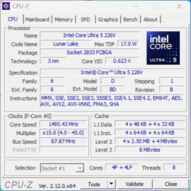
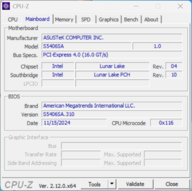

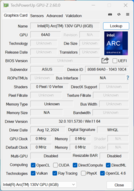
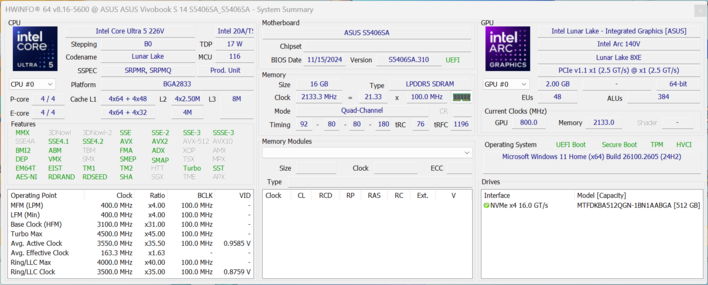
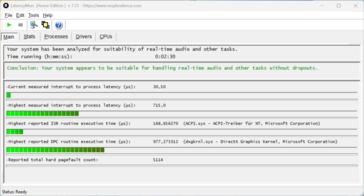



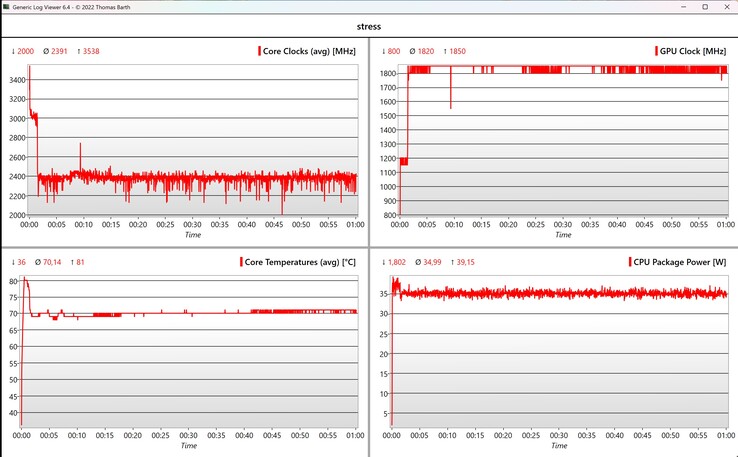


 Total Sustainability Score:
Total Sustainability Score: 







